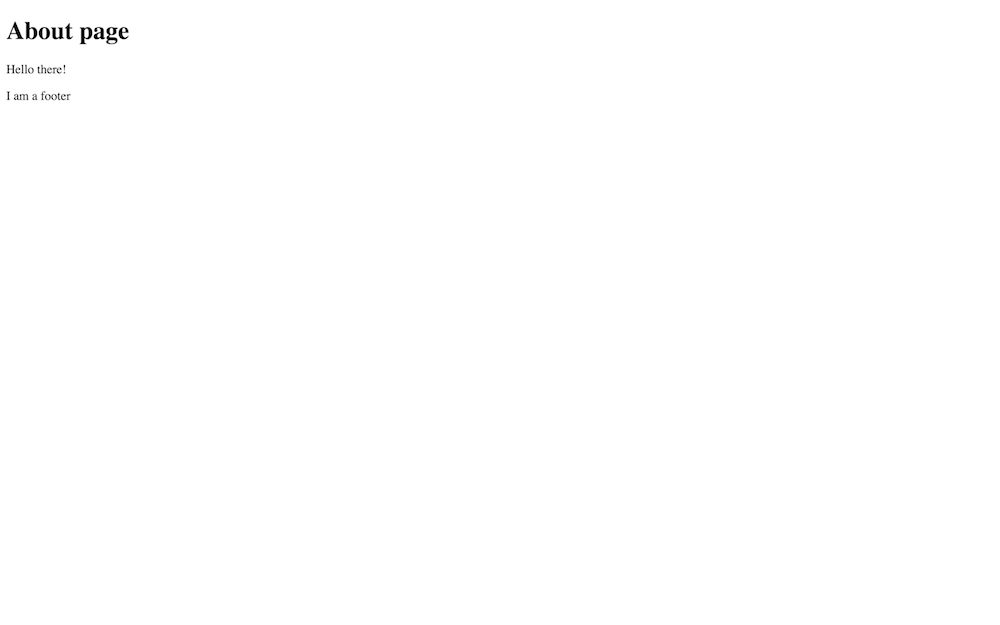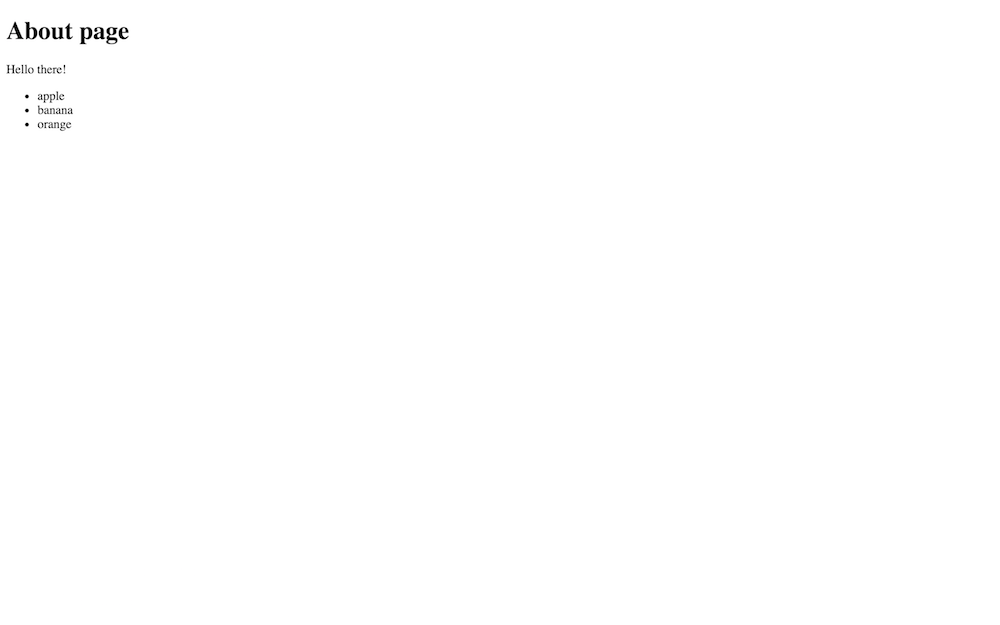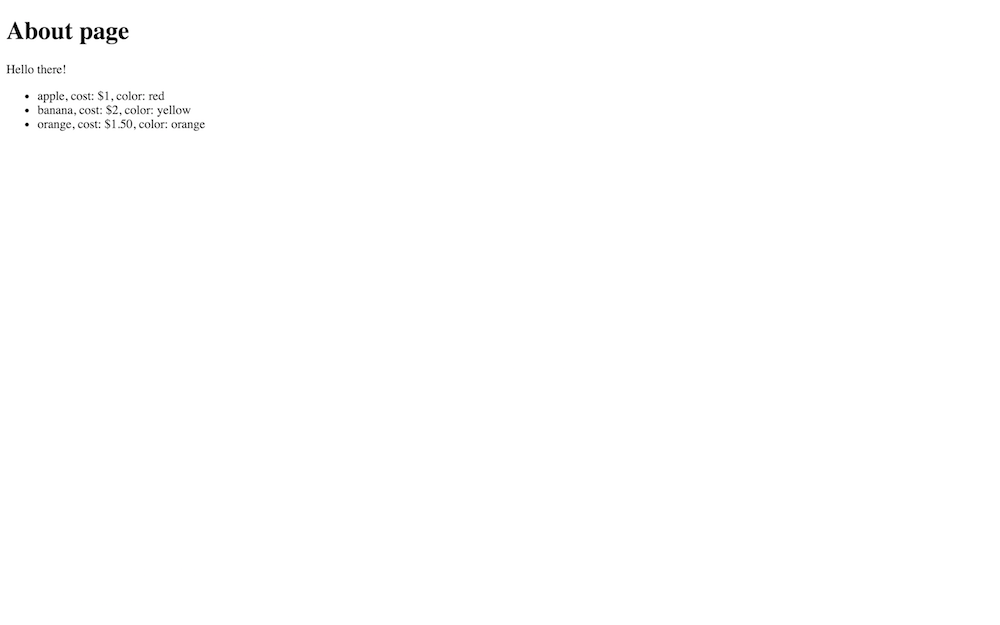Introduction
Front matter is used to set variables and metadata on pages in your Jekyll site.
Basics
We’ll start with some basic HTML structure in about.html:
<!doctype html>
<html lang="en">
<head>
<meta charset="utf-8">
<title>About</title>
</head>
<body>
<h1>About page</h1>
</body>
</html>

Now we’ll set a variable in front matter, then output it on our page. Front matter lives between two triple dashed lines --- at the top of the file. In between these lines we can write YAML to set variables.
Let’s set a variable called hello_text and give it a value of “Hello there!”. about.html now looks like this:
---
hello_text: "Hello there!"
---
<!doctype html>
<html lang="en">
<head>
<meta charset="utf-8">
<title>About</title>
</head>
<body>
<h1>About page</h1>
</body>
</html>
To output front matter variables, Jekyll uses a language called Liquid. We’ll cover Liquid in later videos, for now you need to know two basic tags:
- You can output variables by surrounding them in two curly braces e.g.
{{ variable }} - You can perform logic statements by surrounding them in a curly brace, percentage sign e.g.
{% if statement %}
We can access variables set in front matter using page.name_of_variable. So let’s add p straight after the h1 and output hello_text.
---
hello_text: "Hello there!"
---
<!doctype html>
<html lang="en">
<head>
<meta charset="utf-8">
<title>About</title>
</head>
<body>
<h1>About page</h1>
<p>{{ page.hello_text }}</p>
</body>
</html>

Show and hide page section
We can use front matter to show/hide sections of a page. In this example we’ll add a show_footer variable to the front matter which when set to true, will add a footer to the page.
---
hello_text: "Hello there!"
show_footer: true
---
<!doctype html>
<html lang="en">
<head>
<meta charset="utf-8">
<title>About</title>
</head>
<body>
<h1>About page</h1>
<p>{{ page.hello_text }}</p>
{% if page.show_footer %}
<footer>I am a footer</footer>
{% endif %}
</body>
</html>

Changing show_footer to false removes the footer.
Arrays
Let’s output a list of fruit on the page. First we’ll create a new array called fruit, each item is indented with two spaces then starts with a hyphen.
In the body of the page we’ll iterate over the items and output them as an unordered list.
---
hello_text: "Hello there!"
show_footer: false
fruit:
- apple
- banana
- orange
---
<!doctype html>
<html lang="en">
<head>
<meta charset="utf-8">
<title>About</title>
</head>
<body>
<h1>About page</h1>
<p>{{ page.hello_text }}</p>
<ul>
{% for item in page.fruit %}
<li>{{ item }}</li>
{% endfor %}
</ul>
{% if page.show_footer %}
<footer>I am a footer</footer>
{% endif %}
</body>
</html>

Objects
Objects allow for complex data structures. We’re using it in our fruits array so can set the cost and color of a fruit in addition to its name. Instead of having strings as the array items, we want them to be keys and values.
When we’re output the fruit, item is now an entire object so we need to reference the keys inside the object:
---
hello_text: "Hello there!"
show_footer: false
fruit:
- name: apple
cost: $1
color: red
- name: banana
cost: $2
color: yellow
- name: orange
cost: $1.50
color: orange
---
<!doctype html>
<html lang="en">
<head>
<meta charset="utf-8">
<title>About</title>
</head>
<body>
<h1>About page</h1>
<p>{{ page.hello_text }}</p>
<ul>
{% for item in page.fruit %}
<li>{{ item.name }}, cost: {{ item.cost }}, color: {{ item.color }}</li>
{% endfor %}
</ul>
{% if page.show_footer %}
<footer>I am a footer</footer>
{% endif %}
</body>
</html>

The real power of front matter comes when it’s used in combination with layouts and includes which we’ll cover in the next tutorials.